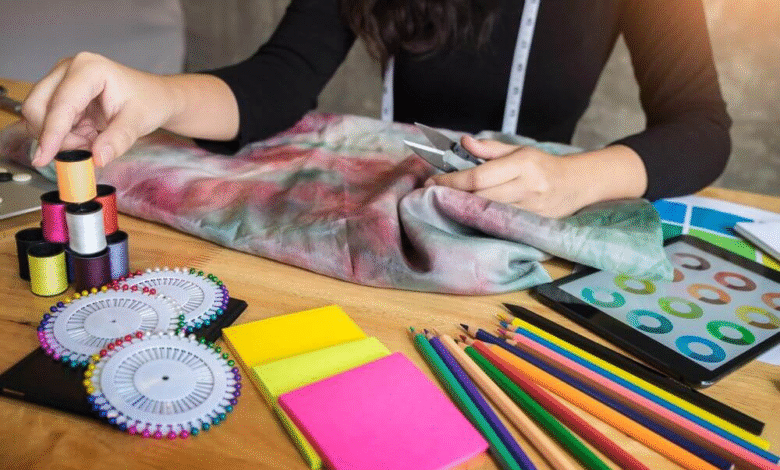
By Minahil Ali
Textile design has undergone a remarkable transformation over the centuries, reflecting technological advancements, cultural influences, and shifting consumer demands. From ancient civilizations to modern innovations, the art of textile design has evolved significantly, shaping the way we create, produce, and interact with fabrics.
Past: A Rich Heritage
Textile design has its roots in ancient cultures, where artisans crafted fabrics by hand using natural fibers like cotton, silk, and wool. The Egyptians, for instance, were renowned for their intricate linen fabrics, while the Chinese perfected the art of silk production. In India, the traditional craft of block printing and dyeing has been passed down through generations, resulting in exquisite textiles with unique patterns and motifs.
The Industrial Revolution marked a significant turning point in textile design, as mechanized looms and printing techniques enabled mass production and increased accessibility. This led to the development of new textile industries and the emergence of innovative designs.
Present: A World of Possibilities
Today, textile design is a dynamic and diverse field, driven by technological advancements and changing consumer preferences. Some key trends shaping the present landscape include:
- Digital Printing: Digital printing has revolutionized the textile industry, allowing for rapid prototyping, customization, and reduced waste.
- Sustainability: Eco-friendly materials, production methods, and recycling practices are gaining traction, as consumers prioritize environmental responsibility.
- Smart Textiles: The integration of technology into fabrics has given rise to smart textiles, which can monitor vital signs, provide UV protection, or offer temperature control.
- Global Influences: Textile design now draws inspiration from diverse cultures, traditions, and artistic movements, resulting in a rich tapestry of patterns, colors, and textures.
Future: A World of Innovation
As we look to the future, textile design is poised to undergo further transformations, driven by emerging technologies and shifting consumer needs. Some potential developments on the horizon include:
- Nanotechnology: Researchers are exploring the potential of nanotechnology to create high-performance textiles with enhanced properties, such as water repellency or antimicrobial activity.
- Biodegradable Materials: Biodegradable textiles made from natural materials like plant-based polymers or algae-based fibers could reduce waste and minimize environmental impact.
- 3D Printing: 3D printing technology may enable the creation of complex textile structures and customized products with unprecedented precision.
- Circular Economy: The textile industry is shifting towards a circular economy model, where materials are designed to be recycled, reused, or biodegradable, reducing waste and promoting sustainability.
Conclusion:
In conclusion, the evolution of textile design has been a remarkable journey, from ancient craftsmanship to modern innovations. As technology continues to advance and consumer demands shift, the future of textile design promises to be exciting, sustainable, and full of possibilities. By embracing innovation, creativity, and responsibility, the textile industry can continue to thrive, creating fabrics that not only delight the senses but also contribute to a more sustainable world.
(The writer is a student at Textile Designing Department at University of Agriculture Faisalabad. aisha.mushtaq@uaf.edu.pk)






